Pat Letendre interviews our TM colleagues - past & present:
It's my pleasure, indeed an honour, to write a series of blogs for CSTM to celebrate the careers of transfusion professionals who came before and made a difference. Some names you may recognize, some you may not. But rest assured these diverse individuals all made a difference and we are the better for it.
Each blog begins with my musings on the individual, followed by a brief background on the person's career, sometimes with my comments throughout. If you're looking for a rah-rah, rosy view of Canada's transfusion medicine field, this isn’t it. Why? Although all participants enjoyed their careers and love the transfusion profession, they also speak honestly about both the ups and downs. Perhaps their reflections will resonate with your experiences.
I will remember you: Astrid Maguire
This blog features Astrid Maguire, a medical laboratory technologist (MLT) I first met 44 years ago in Edmonton. I came to know her more closely when she was the supervisor of transfusion medicine in Edmonton's UAH (1980-2001) as I was the clinical instructor of both Medical Laboratory Science & NAIT students (1978-1999) who did their clinical training in UAH. We’ve remained good friends to this day.
Background
Astrid had a long successful career in many different and diverse roles. Of note, she was the co-founder (along with Neville Bryant) of the Canadian Association of Immunohematologists (CAIH), which later became the CSTM. To give you a sense of who Astrid is, I’ll related a note she wrote to me on finishing the blog:
“I never even had ONE day where I could say I was bored with my job. There always were opportunities, opportunities for improvement and a feeling of satisfaction that I made some difference. The transfusion specialists in Canada are a very special group of people and we have a close connection. It has been such a pleasure to work with so many across the country in different capacities. It feels like a family!
I started out in blood banking, as a job. I felt that part time work, once I started a family was more than enough. However, that is NOT at all how it played out. I ended up having a long, successful career, and had so much support from co-workers, colleagues, pathologists, as well as from my mother, husband and family in all my endeavors within the field. Never a dull moment. It will now be a challenge in retirement to slow down and find new opportunities to fulfill my love of learning.”
Before you can truly appreciate how Astrid made a difference and understand her musings, you should know more about her experiences. For a few of Astrid's many contributions to Canada's transfusion community, see a
short resume.
ASTRID’S MUSINGS
Ways I made a difference and contributed?
- In my various positions it was always a pleasure to be able to motivate and encourage co-workers to continue to take courses or opportunities for continuing education to keep up with their professional status as a lab technologist. Sharing information from conferences or other educational opportunities with staff was always important to me, as leading by example would encourage others.
- Being involved with a new hospital building (Walter C. Mackenzie Health Sciences Centre, built in 2 phases, 1981 & 1986) and ensuring that the move to a new area for transfusion was ready and set up for success, with staff participation, was very interesting. [Note: For brevity it's part of UAH and referred to as such.] For example, as a cost cutting measure prior to the move in date, it had been decided that there were too many phones, so the project only had one phone in the large area for transfusion medicine. Naturally this was not going to work, as calls to and from the OR and outgoing calls related to blood inventory needed more than one phone. Also, the new space separated the testing and inventory management areas where each area needed phone lines. There was also a red phone set up which connected directly to the operating room.
- Another cost cutting measure was the decision to NOT put in a locked door mechanism for entering the lab/blood bank. This was a concern, and the move did NOT go forward until the lock system was installed. This came about as when the lab was still in the old facility, a blood bank tech was accosted by a stranger that came up the back from Emergency. At the time, the next closest technologist was in a very separate area from the blood bank. Luckily the employee managed to get away by leading the assailant down the back stairway to the Emergency Department where she could get away. I received a phone call at 3 am, stating that she quit. However, after some counseling the technologist did stay working.
Another such situation in the ‘old lab’, was when we had the psychiatry inpatient ward down the hall from the blood bank, and early one morning, when the night tech thought she heard a colleague coming in, she turned around to see a naked person, stating that they were lost. After an initial shock, she called the nursing unit and was told that yes, they were missing a patient. All ended ok.
- Another area that I think I supported was that of preparing staff for interviews when new positions were posted. For example, in the mid-90s following a significant staff lay off, there were postings for positions, where staff had to reapply for their positions. Two excellent blood bankers who each had many years experience in the lab were amongst several other applicants, including new grads. When after the interviews were done, management told me that my two blood bankers would not be re-hired, as they did very poorly at their interviews. I was stupefied and insisted that this was not right and that because they were seasoned blood bankers they were not prepared for the type of interview as then were current. With my influence the two blood bankers did get their positions back and continued to work for many years. As supervisor I then immediately put together an in-service on how to prepare for an interview, also emphasizing the need to have a resume.
An example of one of the new interview questions: “Why is a manhole cover round and not square?” This would have been meant to see if one can think outside the box and had nothing to do with the technical and knowledge component of the job they would be doing.
- This same opportunity came up when I was in Kamloops and positions were posted following some retirements. The interesting aspect here was that for about 10 years the only positions that had opened were for casual. Hence employees who had worked for many years as casual were not prepared for interviews, as were new grads who now had training for how to be interviewed, and of course the new interview type questions. When I asked employees how they were preparing for their interview, they responded with - "well, they all know my work skills". I immediately set up an education session for staff on preparing for interviews. Also, I coached some staff on writing a resume, as well as performing some mock interviews.
- Another major project involved a LEAN project in Kamloops, where there were separate areas within the lab: chemistry, special chemistry, hematology, special hematology, blood bank and specimen collection/handling and send outs. Each area was staffed with area-specific staff as well as some cross-trained staff. The LEAN project was to completely rearrange the lab, such that the core areas of lab, hematology; chemistry and specimen control were merged into one circle, to allow for specimens to enter the circle at the point of testing and move on to further testing as per the test requests ordered. The intent was to have a first-in first-out for test resulting, rather than wait for all tests to be completed before reporting.
This major project was a strain on all staff, and management was only following the script and not listening to staff about their concerns. In my role a professional practice lead for the lab, I would hold separate sessions to ensure that staff were being heard about their concerns, ensuring that some of these concerns were brought to the project team. The staff needed to have an advocate for their work concerns, and this proved to be helpful knowing that they did indeed have a voice that counted. Also, staff retraining to be cross-trained proved a challenge, as some individuals were subject RTs and therefore were not qualified to cross-train.
A similar situation occurred, when I had the role of Transfusion Safety Officer, and a staff member who was a charge tech for microbiology was needing to cross-train, when a decision was made to remove microbiology testing from that lab (Westlock, AB). The technologist in this case had worked only in microbiology for over 20 years and was not prepared to start cross-training. As a result she resigned. Unfortunately, a seasoned technologist was lost within the system.
What gave me the most pleasure?
- Working and supervising some amazing co-workers gave me pleasure and the inspiration to continue to keep making work life more satisfying.
- Also having social opportunities with colleagues across the country was so much fun with sharing experiences and laughing at some of our shared situations.
- Getting a positive response when visiting small sites and pointing out areas for improvement in the blood bank area of the lab was a joy and wanted me to help even more, as most staff were so eager to learn.
- Not enough time was always a factor. Another factor was not being able to be on-site long enough, but that had me prepare Skype meetings that were education-based. Again, these were attended by many and included topics such as blood products vs blood components, the need to understand the use of unmatched blood and how to issue in a crisis situation. This was especially important where there would only be one staff member, who would be covering the lab and x-ray, not just blood bank.
- Mentoring others was always a passion of mine and many of the staff that I supervised have moved into management and director positions.
- The most pleasure that I have had in my career was working with some very awesome co-workers. Their positive outlook, when during the chaos of lab reconstruction, staff shortages, and or major cutbacks, was especially inspiring.
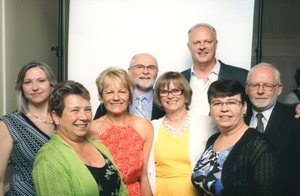
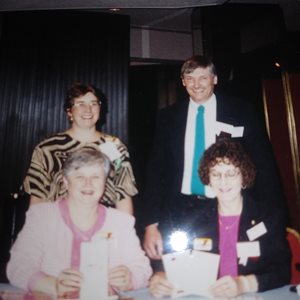
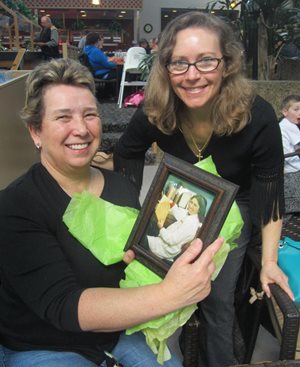
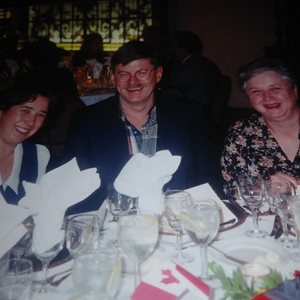
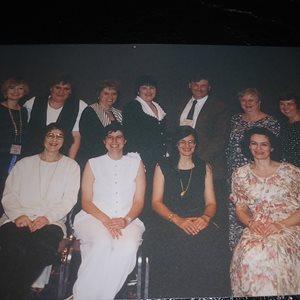
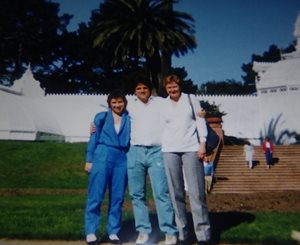
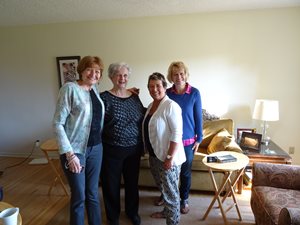
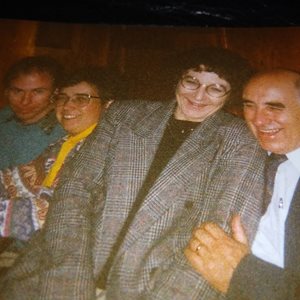
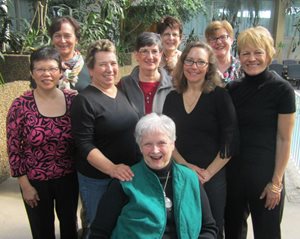
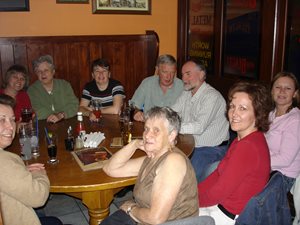 What I learned from colleagues I’ve worked with
What I learned from colleagues I’ve worked with
- Talking to others about similar situations certainly made me realize that my problems weren’t unique and learned of other ways to handle things. A dear friend, Kathy Chambers, who I had hired in the 70s at the University of Alberta Hospital in Edmonton, became a mentor and provided me with good advice on many occasions. This ended up being to my betterment as I then did consulting in Quality Systems for a year prior to moving into a great position as supervisor of a transfusion lab in another province (BC).
- Being on the CSTM Standards Committee provided new knowledge from committee members. For example, the monitoring of a blood bank fridge that can be done electronically using a Board, which is more sensitive than relying on the fridge alarm and checking internal temps. This also had us rewriting how the standards were written.
- On the CSA Standards Committee, one of the members was from the Arthritis Association, and asked questions about what we required in our TM Standards from a layman’s perspective: such as why did we need to monitor our fridges so many ways? When we responded, stating how we had situations where we lost a whole fridge of blood, which can happen, it did seem a little ridiculous that we changed standards because of one incident.
- From colleagues across Canada I learned that there were some very intelligent people with some extraordinary skills in specific aspects within transfusion medicine. For example, serology testing, and how across the country there are fewer and fewer experts in this area, e.g., Eric Ching and others.
Significant regrets or realities you wish were different over the years or things that could be improved
- One thing that has bothered me for many years, especially early on in my career, is that promotions were often given based on the level of education, even if that education wasn’t necessarily significant for the job at hand. For example, management positions were often given to people with degrees, even if the person did not have experience in people management. I do realize that they have other skills, however people management is very important as a manager. I know that more recently people management has been incorporated into the degree program.
- A significant oversight, especially where labs have CLXTs or lab assistants work in labs where transfusions occur, is that management thinks that the smaller hospitals that transfuse patients are only dispensing sites. In larger sites where lab assistants are part of the transfusion service, they only enter blood into the LIS or only pack blood using a procedure.
- My issue is that we cannot minimize the need to have good solid transfusion knowledge specific to the task being performed. I understand that it might be hard to have courses to cover this, but it should be the employer’s responsibility to ensure that the staff performing these tasks, fully understand what the task is and how significant errors can impact the patient or blood supply.
Employer responsibility should not be just to help with staffing issues, especially in small hospitals that have transfusion services, or in large hospitals that need support in inventory management, especially with regionalization of labs with more central hubs.
What is the biggest concern for the profession going forward or the main challenges?
- 1. The biggest concern I have is the ongoing move to having a hub which would service a lot of hospitals in a large geographic area, where the spoke hospitals have blood components and products on site which are staffed with generalists, CLXTs, and lab assistants. My concern is the lack of understanding by management about the need to have adequate training by a transfusion specialist specific to the tasks performed at the site and relative to the specific blood components/blood products stored on site.
- The training of the lab staff should also be augmented with training of nursing staff. Another area lacking is physician education to know what blood components and products are on site and the requirements for their usage. With the advent of new blood products, it is of great importance that physicians are aware of the appropriate usage as this is an ever-changing field.
- Education should be considered on a regular basis, as well as whenever there are new staff. Having a regional transfusion technologist be hired to travel to sites, as required, with a minimum of once/year, would be a definite asset to ensuring safer transfusion practices.
Challenges in an age of cutbacks
- In my career the most significant cutback was in the mid-1990s, when I believe at least 25% of staff were let go. This was tragic for many but also had some people change their careers or find an alternative position in related fields, eg., computer systems. This should have awakened individuals to realize that their jobs are not protected and to look at alternative career paths using their current education and to gain further education to ensure that they aren’t stuck without a job.
- Other cutbacks occurred when LEAN projects were introduced, where instead of having separate hematology/ chemistry and transfusion areas within the lab, that core labs were developed. This resulted in cross-training, which was challenging, especially for staff that may have only worked in one department for many years and now did not want to start over by getting cross-trained. This resulted in loss of staff through attrition but none-the-less cutbacks to the overall staff. Staff had the same workload with fewer people.
Anecdotes Astrid shared
#1. CAIH
- Early in my career, I asked Maureen Webb, my mentor at the time, why there wasn’t a cross-provincial group to encourage sharing of information, etc. She challenged me to try and set something up. I proceeded to send out letters to see if there was interest in forming a western Canada immunohematology group.
- Word got around and I was informed that some individuals in eastern Canada had already been discussing a Canadian group, similar to the AABB. I then thought that this was way over my head, but I did send out letters and then heard from Neville Bryant and that he would set up a meeting.
- I then went to Dr. Jim Hill at UAH and he agreed that I could attend the meeting in Toronto. At the initial meeting there were about 12 people with me being the only one outside of Ontario and only one person from Thunder Bay. I made it a point to state that if there was going to be a Canadian group that it couldn’t just be in eastern Canada.
- Things moved from there, where a smaller group moved forward with the creation of the Canadian Association of Immunohematologists (CAIH). Neville Bryant, I believe was the first president of the CAIH, and I followed as the second. A newsletter was created as well, which was still typed on a typewriter. I remember having my children address the envelopes and seal them.
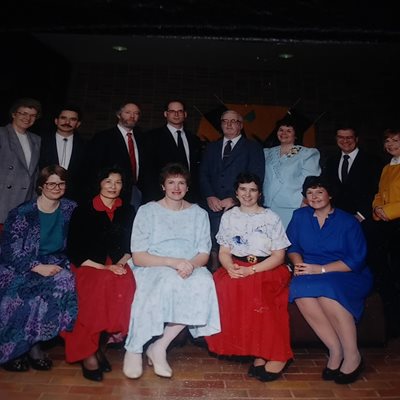
AABB President's Dinner
#2. CSTM Standards
- The first discussion group for the creation of the CSTM Standards was in a hotel room in Edmonton, when my last born was only 3 weeks old in January 1984.
#3. ISBT International Congress
- Many years later in 2000, CSTM had the opportunity to bid for the ISBT international meeting. We were successful and hosted it in Vancouver.
- It was a 2-year planning event, which also allowed Kathy Chambers, Noel Buskard and me as chairs of the planning committee to attend the ISBT conference in Vienna, Austria. What a fantastic opportunity.
- This is also where we found a significant difference in non-Canadian conferences in that they were more focused on scientists and physicians. So as laboratory technologists Kathy and I were hesitant to present at the ISBT Board meeting of the upcoming ISBT conference planned for ISBT 2002 in Vancouver.
- As it turned out we had a conference that included sessions for technologists, and it was the most successful conference from a financial perspective. We also had great support from CBS, to allow a discount for registration if you were a CSTM member.
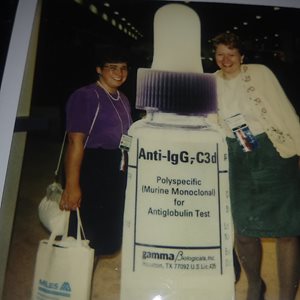
Comments are most welcome. Do any of Astrid's experiences resonate with yours? Please add to the record of what it was (or is) like to work as a transfusion professional in Canada.
Your comments are encouraged!
This blog is moderated and comments will be published upon approval.